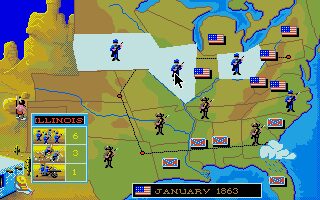Mech Brigade is a wargame published by Strategic Simulations Inc. (SSI) in 1985, initially for the Apple II and Commodore 64.
The game is a landmark in tactical war simulation and one of the most detailed Cold War-themed strategy games ever released for home computers. Designed by Gary Grigsby, one of the most prolific and respected names in the wargaming scene, it built upon the mechanics of his earlier work Kampfgruppe, but shifted focus from World War II to a hypothetical conflict between NATO and Warsaw Pact forces in Central Europe.
The game was originally developed for the Commodore 64 and Apple II, later reaching MS-DOS systems. It took advantage of the limited graphical capabilities of the era by using a top-down map view with simple but effective symbols representing units. Despite the spartan visuals, Mech Brigade offered unmatched depth and realism for its time.
Players could control either NATO or Soviet forces and were tasked with managing platoons of tanks, infantry, artillery, and air support. What set Mech Brigade apart was its meticulous attention to realism: units had line-of-sight limitations, weapon ranges were true to their real-world counterparts, and terrain played a crucial role in movement and combat effectiveness. The game modeled modern battlefield technologies, including wire-guided missiles, attack helicopters, and electronic warfare. Every move needed to be calculated carefully—tactical positioning, timing, and combined arms cooperation were essential to achieve victory.
Compared to SSI’s World War II titles, Mech Brigade felt more dynamic and lethal. Encounters could be brief and violent, often decided by a single missile strike or ambush. This reflected the perceived brutality and speed of a modern armored conflict, something not many games of the time dared to simulate.
Grigsby's dedication to realism meant that Mech Brigade had a steeper learning curve than other strategy games, but it was highly rewarding for those willing to master it. The manual was extensive, and success required deep understanding of both the mechanics and the military hardware in use. Nevertheless, the game's AI was surprisingly competent, and scenario customization extended its replayability.
User reception at the time, especially among strategy and military enthusiasts, was very positive. Many appreciated its shift to modern warfare and the introduction of more complex tactical layers. It became a staple for serious wargamers and remains a notable entry in SSI's long catalog of tactical simulations.
Mech Brigade is often seen as a precursor to more modern real-time strategy and tactical combat games. While its interface and graphics have aged, its core design remains a testament to what was achievable on early home computers with the right vision and dedication to authenticity.













